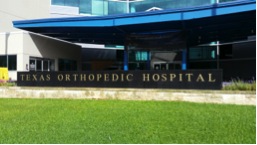Undergraduate perspective on Sports & Exercise Medicine – a BJSM blog series
By Michael Akadiri
 This Spring, I travelled across the pond from the UK to the USA to take the fortuitous opportunity of a 6-week study elective. In line with the country’s nickname as ‘The Land of Opportunity’, I viewed this trip as my opportunity to delve further into the ever growing speciality of Sports and Exercise Medicine (SEM).
This Spring, I travelled across the pond from the UK to the USA to take the fortuitous opportunity of a 6-week study elective. In line with the country’s nickname as ‘The Land of Opportunity’, I viewed this trip as my opportunity to delve further into the ever growing speciality of Sports and Exercise Medicine (SEM).
Primary Care Sports Medicine
The setting for my first three weeks was the Orthopedic Specialty Institute (OSI) in Orange, California shadowing Dr Kruse, a primary care sports physician (most akin to a SEM consultant in the UK). Primary care sports physicians in the US typically undertake three years of Family Medicine Residency (training), followed by a one year Sports Medicine Fellowship.
Know Your Sport!
Dr Kruse is one of the USA Gymnastics’ Team Physicians. Therefore I observed the management of various gymnastic injuries in clinic. Among the great insight I gleaned was the very useful lesson: Know your sport! History taking is a much smoother process when the clinician understands the sport specific terms used by the historian to describe their mechanism of injury. What is a Tumble Track? High Bar?
These upcoming Olympic Games should be watched for education as well as entertainment!
No screening? No participation!
Outside of the clinic, I observed two High School Pre Participation Physical Examinations (PPE). All athletes from Junior High School (c. 12 years old) and above must undergo and pass an annual PPE in order to participate in any sport. The PPEs were held in May to permit adequate treatment time for those who had ‘failed’ over the summer break. Is this a concept that we should introduce on our shores to provide better holistic care for our Secondary School athletes?
Sports Orthopaedics
I spent the latter three weeks in Houston at the Texas Orthopedic Hospital (TOH) to observe the experienced Sports Orthopaedist, Dr Elkousy. He specialises in arthroscopic surgery of the knee and the shoulder. Sports Orthopaedists typically spend five years undertaking an Orthopaedic Residency followed by a One Year Sports Medicine Fellowship.
Taking the long term view
A footballer tears his/her ACL. It’s reconstructed and the player successfully returns to play? Success right?
What about the long-term sequelae?
A handful of former college (American) Football and Basketball players with previous ACL tears presented the clinic with moderate to severe OA as early as 37 years old! Whilst we await further research on the risk factors for early OA in athletes, should more consideration be given to the long-term effects of participating in elite sport?
Final thoughts
What an educational and thought provoking six weeks! Amongst all the teachings, I feel the most important lesson is that there’s a lot more to sports medicine than the pitchside care of athletes. The bread and butter of our practice is the clinical care of the active population.
Mr Michael Akadiri is a final year medical student at the University of Nottingham. He is set to graduate in the summer of 2016 and commence work as a junior doctor in the South Thames Deanery. As an undergraduate, he co founded and led Nottingham’s University SEM Society as President for two years.
Dr. Liam West BSc (Hons) MBBCh (@Liam_West) is a graduate of Cardiff Medical School and now works as a junior doctor at the John Radcliffe Hospital, Oxford. In addition to his role as an associate editor for BJSM he also coordinates the “Undergraduate Perspective on Sports & Exercise Medicine” Blog Series.
If you would like to contribute to the “Undergraduate Perspective on Sports & Exercise Medicine” Blog Series please email LIAMWESTSEM@HOTMAIL.CO.UK for further information.